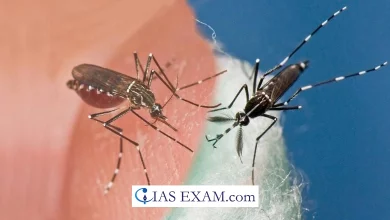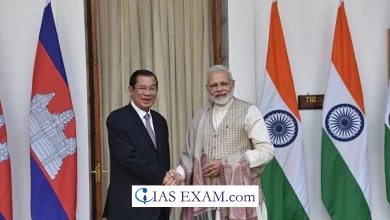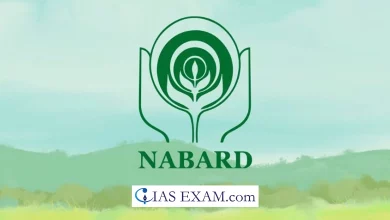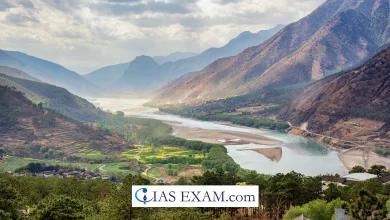Daily Current Affairs for UPSC
Indian Women Peacekeeping Forces
Topic- International Relations [GS Paper-2]
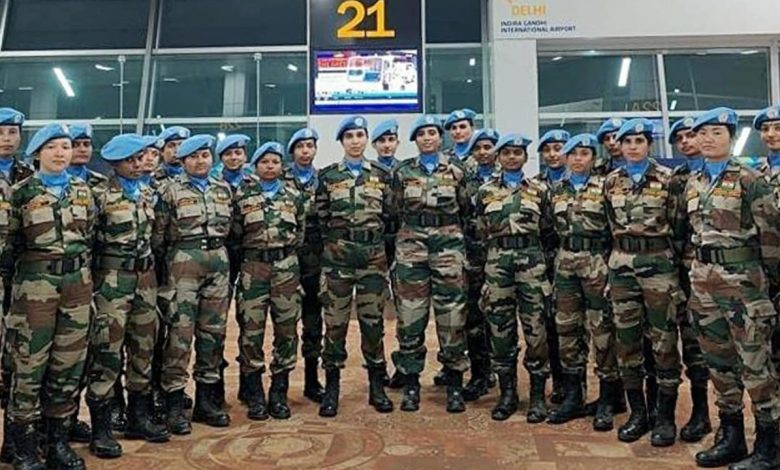
Context- India has recently deployed a platoon of women peacekeepers in Abyei on the border of Sudan and South Sudan as part of the Indian Battalion in the United Nations Interim Security Force.
Key Highlights
- The platoon includes two women Army officers i.e. a Major from the Corps of Signals and a Captain from the Corps of Engineers.
- The contingent has 25 women soldiers from the Corps of Military Police (CMP) and from the Assam Rifles.
- The Corps of Military Police is the only arm of the Army opened for recruitment of women soldiers in 2021.
- This platoon is India’s largest single unit of women peacekeepers in a UN Mission.
- The UN requested member states to deploy female engagement teams (FET) with infantry battalion groups in UN Missions in order to deal with situations involving women and children suffering the most in a conflict situation.
- The FETs tasks include conduct of joint patrols, dialogue with local women or girls, assistance during humanitarian crises, information gathering and perception management.
- UN seeks at least 19% women officers of the total vacancies released to the Army to serve in the peace keeping force. However, the Indian Army had sent 21% of women officers in order to maintain its commitments.
Importance of Women Peacekeeping Units:
- Genesis
- India had already deployed the first-ever all women’s contingent from the Central Reserve Police Force (CRPF) in Liberia in 2007 as part of United Nations Mission in Liberia (UNMIL).
- Praiseworthy:
- It also acted as a model for the African country, which now has 17% women in Liberian security service as compared to less than 1% in 2007.
Indian women tradition in Peacekeeping:
- Dr Kiran Bedi, UN’s first Police Adviser, Major Suman Gawani and Shakti Devi have made a remarkable contribution in UN Peacekeeping.
- As part of UN Missions, women officers have served in several conflict-torn countries in challenging assignments, in medical duties and as military observers.
Social and community development:
- Indian teams in the Congo and South Sudan have done sterling work in mainstreaming women and children into Community and Social developmental projects at the grassroots level.
Vocational Training in native language:
- Women officers have learnt to interact with the population and NGOs in French as well as in local Swahili and took part in various quick impact projects such as facilitating the operation of vocational training centers in the country and setting up power connections.
Better Reach:
- Women officers are able to reach the populace in a better manner, especially the women and children who are majorly affected in conflicts and victims of sexual violence in the conflict zones.
Complementary Role:
- The role of police and other paramilitary contingents in the UN is law enforcement in situations like rioting and stone pelting. While their job is to assist and empower the local population as well as the local Army there under UN resolutions 6 and 7.
Gender Parity:
- The adopted move is in line with the United Nations’ Gender Parity drive and it will serve as a model for the deployment of similar engagement teams in other UN Missions in the near future.
UN Security Council resolution 1325 (UNSCR1325)
- UNSCR1325 ensuing resolutions, as well as the Action for Peacekeeping (A4P) Declaration of Shared Commitments, the UN has called for an expansion of the role and contribution of women in its operations, including of uniformed women peacekeepers.
- In this regard, promoting the participation of women, both in peacekeeping and within the societies, is at the center of UN efforts.
Action for Peacekeeping (A4P) Initiative
- A4P views the Women, Peace and Security (WPS) agenda as critical to enhancing peacekeeping operations’ performance by
- Supporting women’s full participation in peace processes and
- Making peacekeeping more gender-responsive through increasing the number of civilian and uniformed women in peacekeeping at all levels and in key positions.
- A4P has been signed by 152 Member States till now, a number of which have come forward to specifically champion implementation of A4P’s WPS commitment: Bangladesh, Canada, Finland, Germany, Ireland, Italy, Norway, South Africa and the United Kingdom.
Conclusion
- It reflects India’s cherished tradition of active participation in UN peacekeeping missions and showcasing of Nari Shakti in UN Peacekeeping Missions.





.png)
